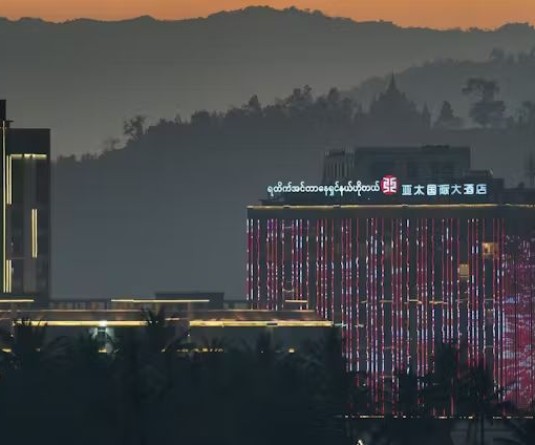
Kashmir Attack: Escalation in India-Pakistan Relations
Monalisa Tase and Monojit Das
On April 22, 2025, a tragic attack occurred in the Baisaran area near Pahalgam, a popular tourist destination in Kashmir (referred as the mini-Switzerland of India). Militants opened fire on a group of tourists, resulting in the deaths of at least 26 individuals, including 24 Indian nationals and two foreign nationals. Over 20 others were injured in the assault. The attackers reportedly segregated male tourists from women and children before opening fire, indicating a targeted approach. The militant group "The Resistance Front" (TRF), a faction of Lashkar-e-Taiba, initially claimed responsibility for the attack only to later deny.
In response, India has taken several punitive measures including suspending the Indus Waters Treaty, expelling a Pakistani military attaché, and revoking Pakistani visas.
India also took swift diplomatic action by briefing foreign diplomats from key countries including the United States, United Kingdom, France, Germany, Japan, Russia, and several neighbouring and Gulf nations, providing them with detailed accounts of the attack, the emerging evidence of Pakistani involvement, and India's measured response. The diplomats were informed about the steps India has taken to maintain regional stability and were urged to exert international pressure on Pakistan to dismantle terrorist infrastructures within Pakistan aimed towards creating instability in Indian soil. India's proactive engagement reflected its strategy of internationalizing the issue diplomatically rather than escalating tensions complete military as for common Indians the sentiments remain very high as innocent civilians getting killed for first time in this manner. It is also to be noted the attack also made loss to the economy of Kashmir as tourism started contributing in a larger way to the valley.
Pakistan however has denied its involvement and instead threatened retaliatory actions. The Wagah border ceremony between the two nations has been downgraded with no “ceremonial hand shake” between the guard commanders. The international community, including the United Nations and the United States, has strongly condemned the attack and called for restraint from both sides. The incident has led to heightened tensions and fears of a full-scale conflict between the nuclear-armed neighbours.
Global Affairs & Geopolitical Developments
Iran Explosion: A New Flashpoint in the Middle East
On April 8, 2025, an explosion occurred at a military facility in central Iran, sending shockwaves throughout the region. The explosion, which took place at the Parchin military complex, a site known for its controversial missile and nuclear research activities, has raised suspicions of sabotage or an external attack. The Iranian government has confirmed the explosion, but no official details have been provided regarding the cause. Analysts speculate that the attack may have been a targeted effort by regional powers such as Israel, which has previously expressed concerns about Iran’s nuclear ambitions.
The explosion comes at a time when tensions between Iran and the West have been escalating. The Joint Comprehensive Plan of Action (JCPOA), or the Iran nuclear deal, remains in limbo, with the United States and its allies accusing Iran of violating terms and progressing with nuclear development. Despite attempts at diplomatic engagement, including recent indirect talks between the U.S. and Iran, the situation has become increasingly fraught with the potential for further military escalation.
The attack on the Parchin facility also adds a layer of complexity to the ongoing proxy conflicts in the Middle East, particularly in Syria, Iraq, and Yemen, where Iran supports militia groups against U.S. and allied forces. Regional actors like Saudi Arabia, Israel, and the Gulf States have closely watched these developments, as any significant escalation between Iran and the West could directly affect their security interests.
Central Asia–Afghanistan Railway Connectivity: Key Developments
In Central Asia, the construction of a railway link between Afghanistan and its neighbouring Central Asian states has made significant strides. The Turkmenistan–Afghanistan–Tajikistan (TAT) railway project, which aims to connect landlocked Afghanistan with the rest of Central Asia, is one of the most ambitious infrastructure initiatives in the region. The project is designed to facilitate trade and regional economic integration, positioning Afghanistan as a key transit hub for Central Asia’s energy and mineral resources.
The railway, which is part of the broader Central Asia Regional Economic Cooperation (CAREC) program, is expected to boost trade between Afghanistan and its Central Asian neighbours’, while also offering a secure trade route to ports in the Persian Gulf. The railway’s completion will not only improve economic connectivity but also provide Afghanistan with much-needed infrastructure to support its post-conflict reconstruction efforts.
In addition to the economic benefits, the railway will also enhance China’s Belt and Road Initiative (BRI) ambitions in the region. The TAT railway provides China with another potential route for transporting goods to and from its western regions, bypassing the increasingly complex geopolitical dynamics surrounding its traditional maritime routes.
While the railway's completion is a promising development for regional stability, it faces numerous challenges, including security concerns from the ongoing conflict in Afghanistan, the influence of Pakistan, and competition with other regional powers like India and Russia. The successful implementation of this infrastructure project will largely depend on how regional stakeholders cooperate and address these challenges.
Sandy Cay Reef: Tension in the South China Sea
China’s alleged seizure of the disputed Sandy Cay Reef on the west of Philippines controlledThitu Island has intensified the already heightened tensions in the South China Sea.
Jonathan Malaya (Assistant Director General National Security Council) is of the view that it is an attempt to undermine the Philippines democratic processes and influence the political discourse in the Philippines with two weeks ahead of the election raise concern. Philippines law makers are also shamming Sandy Cay. Speaker Martin Romualdez (PH House Speaker) called the Chinese planting the flag in the island is a desperate and cheap stunt to boost its illegitimate claims. Senator Risa Hontiveros said that it not only violates International Law but also prevents Philippines fisher folks from entering the area.
Sandy Cay, although a small sandbar of just over 200 square meters, holds significant strategic importance. Under international law, it is entitled to a 12-mile territorial zone, which overlaps with the Philippines’ claims over Thitu Island, a key military outpost. The Philippines uses Thitu Island to monitor Chinese activities in the region, and the development of a military base there can be a possible threat to China’s growing ambition in the Indo-pacific region.
This alleged seizure occurred at a time when Philippines and United States annual Balikatan war scenario drills was about to launch, the largest joint military drills held between the two nations. The timing of the seizure appears calculated, as it demonstrates China’s ongoing strategy of asserting its claims over almost the entire South China Sea, despite international opposition and rulings against such claims.
This territorial water space dispute on Sandy Cay is likely to deepen the rift between China and the Philippines, exacerbating existing conflicts over the South China Sea. The international community, including the United States and ASEAN countries, has expressed concerns about China’s aggressive stance in the region, warning that such actions threaten the freedom of navigation and regional stability.
Conclusion: Strategic Implications
The developments of April 2025, ranging from the Pahalgam attack to Iran’s explosion, Central Asia’s infrastructure projects, and China’s maritime assertiveness, reflect a complex and rapidly evolving geopolitical landscape. Each of these issues has profound strategic implications, not only for the countries involved but also for the broader international community.
India and Pakistan continue to grapple with long-standing territorial disputes, with the potential for a new conflict always present. It is to be noted that the aim behind this attack for fuelling religious divide in the country needs to be handled with care. As attacks like this followed by spreading of propaganda and religious based messages might lead to unintentional violence.
The Iran's nuclear ambitions remain a central issue in the Middle East, with external powers like the U.S. and Israel keeping a close watch on Tehran’s activities. In Central Asia, the development of critical infrastructure projects like the TAT railway could significantly reshape regional trade dynamics, while China’s activities in the South China Sea will likely remain a flashpoint for regional tensions.
As these geopolitical issues unfold, the need for careful diplomacy, strategic cooperation, and conflict resolution mechanisms becomes more critical than ever. The coming months will be crucial in determining the trajectory of these conflicts and the broader international order.
Monalisa Tase is Assistant Professor, Department of Political Science, Nagaland University.
Dr Monojit Das is an Independent Geopolitical Analyst and Honorary Advisor to the Editorial Board of IADN (Indian Aerospace and Defence News).






